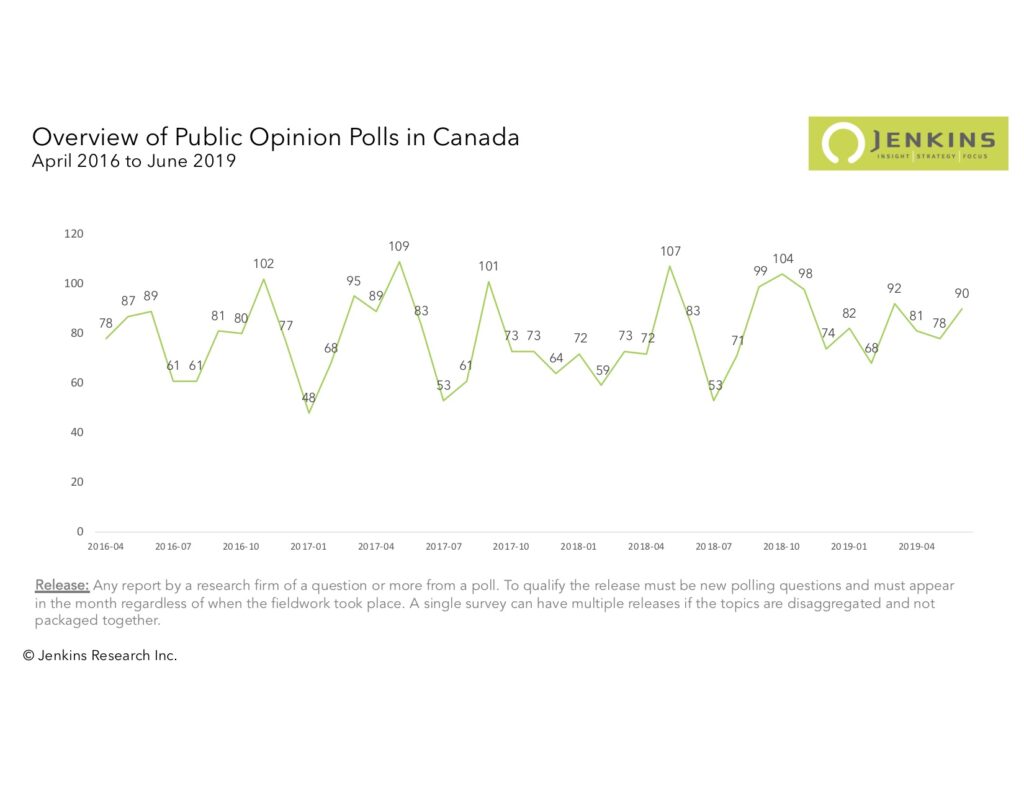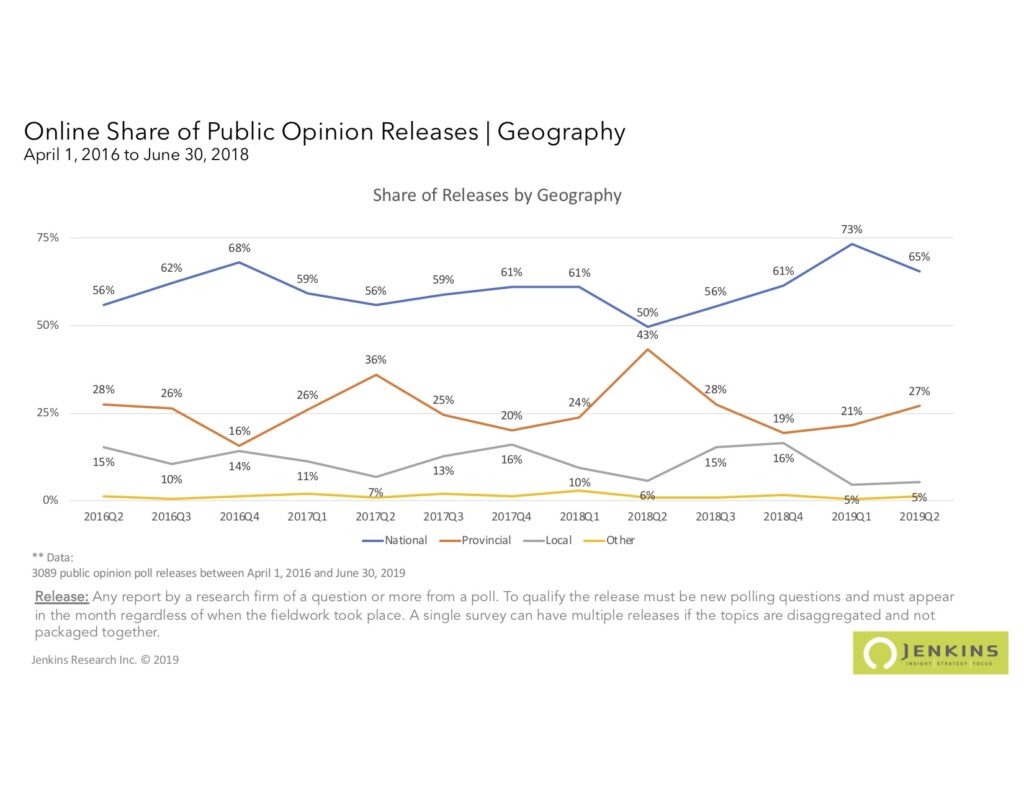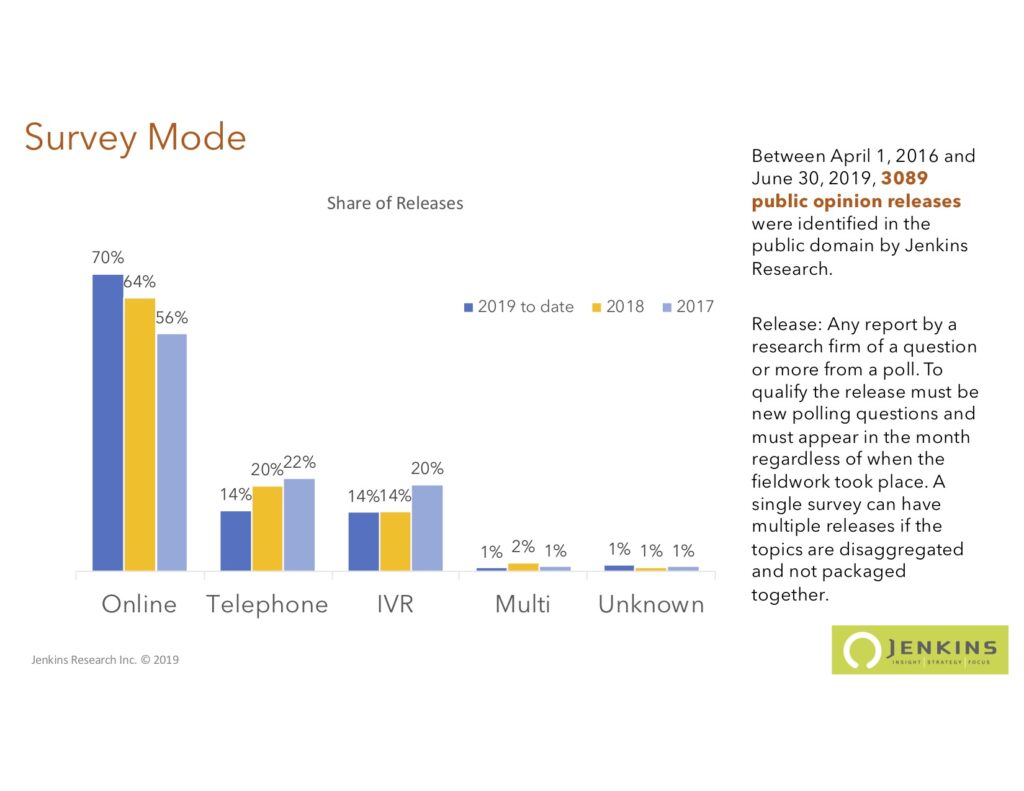The first half of 2019 has confirmed the trends from previous years. First, the number of polls in the public domain appears to be rising. Second, online is asserting its dominance as the primary means of collecting public opinion data. IVR in its various forms and telephone continue to be relevant. Telephone is losing its relevancy and IVR is holding on but failing to make any further gains.
The Number of Publicly Released Polls Has Risen Slightly Recently
Since April 2016, the number of publicly released polls has fluctuated from a low of 48 to a high of 109. Not surprisingly provincial and federal election campaigns cause spikes. The lows tend to be in what we normally consider down-times in the public space; January and the summer.

With over three years of data at this point, we can now see how months compare across time. January of 2019 began with a bang (82 polls) helping drive Q1 to its highest level across the three years. Q2, however, was more on average with the 3 previous quarters. Q3 as the graph shows tends to be quieter but given the upcoming federal election, it may not be surprising to see the number of releases increase compared with previous years.

Polls are also becoming more national over time (see below). In Q1 (73%) and Q2 (65%) of this year, a strong majority of the polls were national. Since 2016 only Q4 of 2016 had such a high share of national polls.

The share of provincial polls is fairly stable except for a couple quarterly spikes. The spike in provincial polls in the spring of 2018 is a result of key provincial election campaigns. Local polls are, based on the past two quarters, on the decline. Only 5% of polls are of a local nature in 2019.
National polls mean that the issues/ topics are being framed as being relevant to everyone. We might ask if the declining share of attention to local issues means that others are left to imply public opinion based on other considerations rather than polls.
Online the Dominant Survey Mode
Seven in ten publicly released polls are online. This is up from just 56% in 2017. The clear loser from a mode perspective is telephone, which used to be the mode of choice for one in five polls. Tied for second is IVR but it is not gaining any ground in terms of the share of polls.

Final Thoughts
It is probably not a coincidence that the share of polls that are national in scope has coincided with a rise in the share of polls conducted online. As we discussed elsewhere, IVR is a mode that recent history suggests has been common for local type polling as it does not rely on pre-existing panels. Creating a local panel is expensive so alternatives are needed. As local polling has declined, IVR would be expected to hold on or lose market share.
It may still be too early to pronounce the death of telephone research but the consolidation of the online approach is clearly reducing the role of the telephone in publicly released research. Of course, the quality of online research remains somewhat murky. Different panel sources and panel recruitment strategies mean that not all online research is the same.

